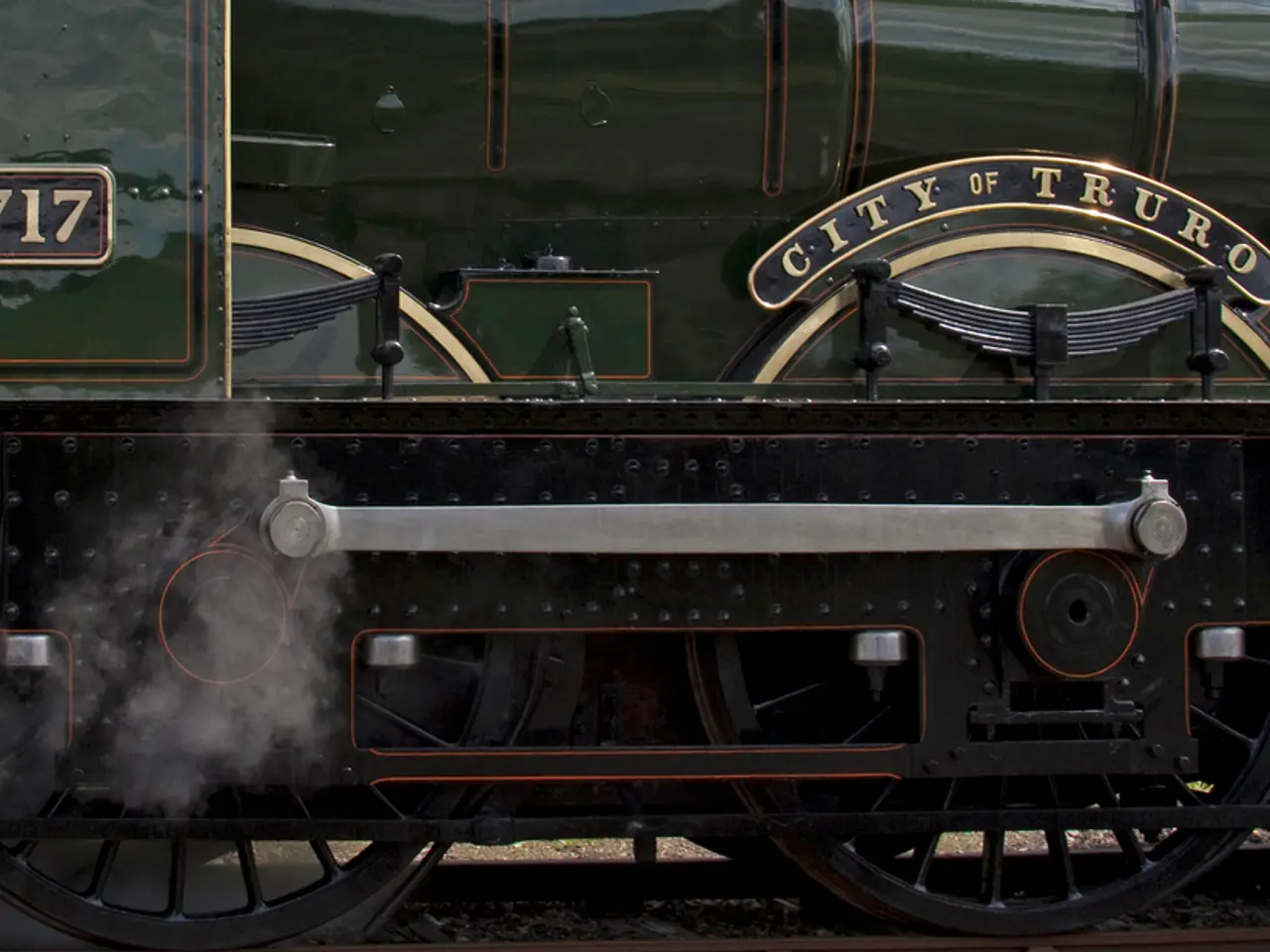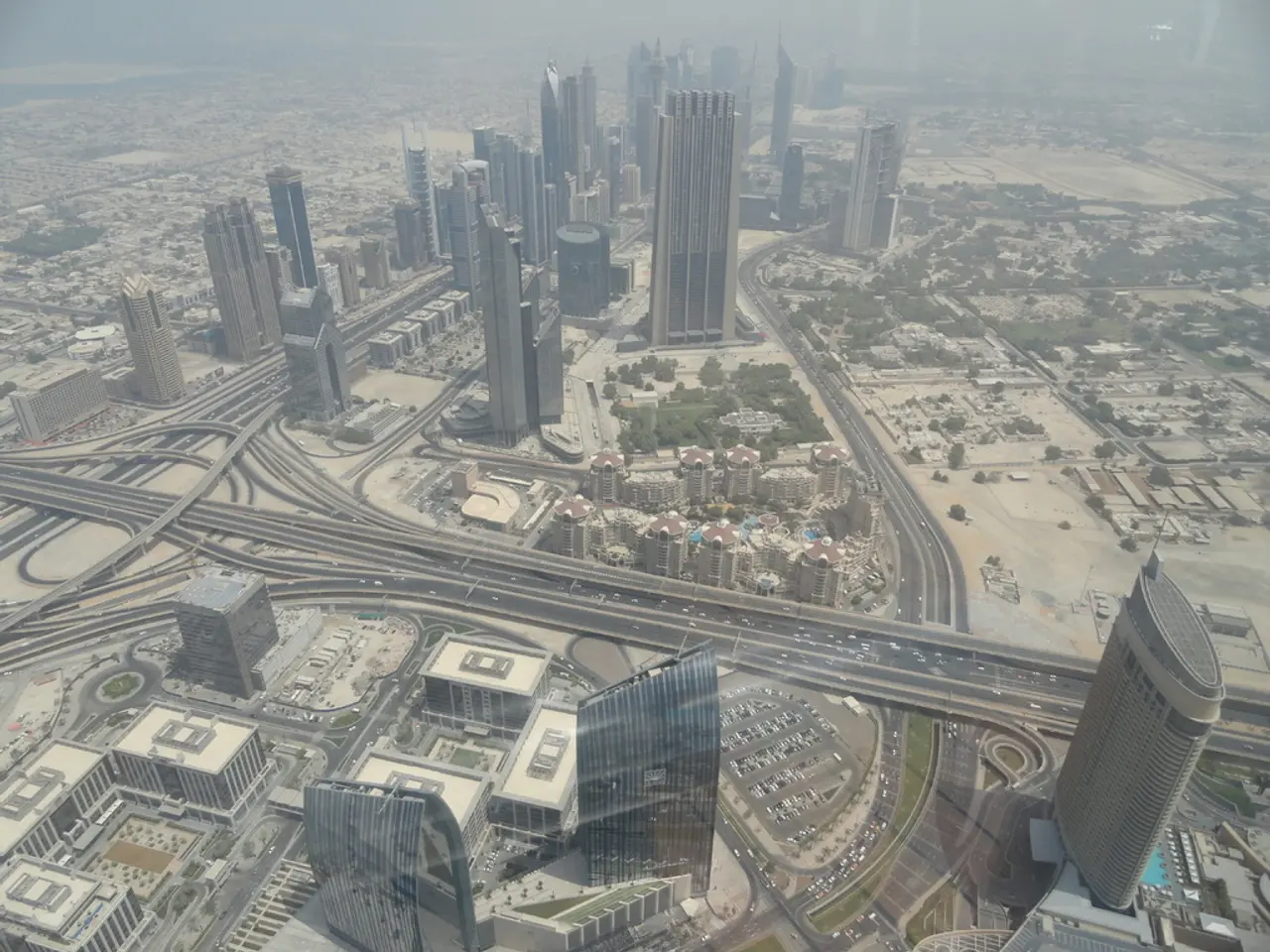Over 78% of Indian railway tracks made suitable for speeds of 110 kilometers per hour, disclosed by government to Rajya Sabha
India's Railway Network Speeds Ahead
India's railway network is undergoing a significant transformation, with a focus on enhancing speed and efficiency. According to Union Railways Minister Ashwini Vaishnaw, over 78% of railway tracks in India are now capable of supporting speeds of 110 kmph and above, a substantial increase from just 39.6% in 2014 [4].
The minister revealed that 56.6% of the total track network can support speeds between 110–130 kmph, while 21.6% can support speeds above 130 kmph. This marks a significant enhancement in the country's railway infrastructure [4].
While the Mumbai-Ahmedabad bullet train project, the country’s first high-speed rail (HSR) project, is scheduled to begin commercial operations by 2027, the government is preparing detailed project reports to expand the HSR network to other major cities based on technical, financial, and demand assessments [1][3]. However, HSR projects are capital-intensive, and decisions to proceed depend on factors like feasibility, demand, and funding options.
In terms of conventional railway tracks, measures for upgradation include the use of 60 kg rails, wider base concrete sleepers, thick web switches, longer rail panels, H Beam sleepers, modern track renewal and maintenance machines [1][3]. As a result, the length of the track where trains have to slow down to less than 100 km per hour has been reduced from 47,897 track km to 22,862 [1][3].
The first rake of the Vande Bharat sleeper train is currently undergoing commissioning. The Vande Bharat trains, with a design speed of 180 kmph and a maximum operating speed of 160 kmph, are an integral part of India's efforts to modernise its railway network [2].
The expansion of the high-speed railway tracks is a response to growing passenger demand among key commercial, economic, and tourist cities. Over the last 11 years, the Indian Railways network has added 35,000 km of track, bringing the total length comparable to that of Germany [1][2].
In summary, while conventional railway tracks are increasingly capable of supporting higher speeds, the dedicated high-speed rail network is currently limited to the Mumbai-Ahmedabad corridor with future expansions under evaluation. The Indian Railways network has undergone significant improvement during the last 10 years, with a focus on enhancing speed and efficiency.
| Aspect | Current/Projected Status | |----------------------------|-----------------------------------------------------| | Tracks supporting ≥110 kmph | 78.4% of total network (as of 2025)[4] | | Bullet train operations | Mumbai-Ahmedabad line commercial by 2027–2029[1][3]| | Expansion of HSR network | DPRs being prepared for new routes; capital-intensive[3]| | Network growth last 11 years| 35,000 km added; track length comparable to Germany[1][2] | | Conventional track upgrades | 60 kg rails, wider base concrete sleepers, etc. [1][3] | | Vande Bharat sleeper train | Under commissioning | | Reduction in slow-speed tracks | From 60.4% to 21.6% | | High-speed track length (110-130 kmph) | More than doubled from 26,409 km in 2014 to 59,800 km in 2025 [1][3] | | High-speed track length (>130 kmph) | Increased more than 4-fold from 5,036 km in 2014 to 23,010 km in 2025 [1][3] |
- The Indian automotive industry may see a boost due to the expansion of the transportation sector, specifically in railways, given the significant modernization of India's railway network.
- With the increase in high-speed railway tracks capable of supporting speeds above 110 kmph, there could be a potential surge in investment opportunities for those interested in the finance sector, particularly in the DeFi industry.
- As the Indian Railway Network continues to progress, the demands on the finance industry will also increase, as more investments will be needed for the development and expansion of high-speed rail tracks to major cities.
- The development and success of the finance industry will be crucial in the deployment of capital for the expansion of the dedicated high-speed rail network in India's growing market, particularly in key commercial, economic, and tourist cities.




